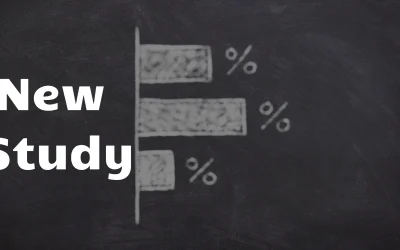When you refinance your mortgage, the interest rate makes all the difference. A lower rate can mean a smaller monthly payment, faster payoff, or thousands of dollars saved over the life of your loan. But how are mortgage refinance interest rates actually determined?
It’s not just about luck or timing. Lenders look at a mix of economic conditions, personal factors, and the details of your loan. Let’s take a closer look at what really drives your refinance rate.
Market Forces: The Big Picture Behind Rates
Mortgage refinance interest rates move with the overall economy. When inflation is high or the economy is growing quickly, rates tend to rise. When the economy slows down, rates often fall as the demand for borrowing decreases.
One of the biggest players in this process is the Federal Reserve. While the Fed doesn’t directly set mortgage rates, its actions have a big influence. When the Federal Reserve buys mortgage-backed securities (MBS)—the bundled home loans sold to investors—it increases demand, which helps push mortgage rates lower.
When the Fed slows or stops its MBS purchases, demand drops and rates typically climb. This is one reason why rates can move even when your personal finances stay the same.
The bottom line: market forces are always changing. No one can predict interest rates perfectly, but understanding what drives them can help you decide when to lock in your refinance.
Credit Score: Your Financial Reputation
Your credit score tells lenders how reliable you are with debt. A higher score means less risk for the lender and often earns you a better refinance rate.
Here’s a general idea of how lenders see credit scores:
740 and above: Excellent
700–739: Good
660–699: Fair
Below 660: Higher risk
Before refinancing, check your credit and take steps to improve it if possible. Even a small score increase can lead to better loan terms and a lower monthly payment.
Loan Program: Different Loans, Different Rates
Not all refinance loans are created equal. Each program has its own rate structure and guidelines.
Conventional loans are based on market pricing and credit risk. FHA loans are insured by the government, often allowing for lower credit scores and competitive rates, though they include mortgage insurance. VA loans, available to eligible veterans and service members, often offer some of the lowest refinance rates available. USDA loans also provide great options for rural homeowners with income limits.
Fixed-rate and adjustable-rate mortgages (ARMs) also price differently. Fixed rates stay the same for the life of the loan, while ARMs can start lower but adjust over time. The best option depends on your plans and comfort level with risk.
Purpose of the Refinance: Why You’re Refinancing Matters
Lenders price loans differently depending on why you’re refinancing.
A rate-and-term refinance is used to lower your interest rate or shorten your loan term. Because this reduces risk, it often comes with the best rates. A cash-out refinance lets you tap into your home equity to pay off other debts, make home improvements, or cover large expenses. Since it increases your loan amount, the rate may be slightly higher.
Even with a higher rate, a cash-out refinance can still be smart if it helps pay off high-interest debt or boosts your financial flexibility.
Lender Margin: The Hidden Piece of the Puzzle
Each lender adds a small margin—their profit—on top of the base market rate. This is why two lenders might quote slightly different rates on the same day for the same borrower.
That’s also why comparing options matters. A difference of just 0.25% in rate could mean thousands of dollars saved over the life of your loan. A good mortgage broker helps you compare multiple lenders at once to make sure you’re getting the most competitive rate.
Bringing It All Together
Your mortgage refinance interest rate depends on several factors: market conditions, your credit score, the loan program, your purpose for refinancing, and the lender’s margin. Understanding how these pieces fit together helps you make confident, informed decisions.
When It’s the Right Time to Refinance
There’s no single perfect time to refinance—it all depends on your goals. Some homeowners refinance to lower their rate and monthly payment, while others use it to pay off high-interest credit cards or personal loans.
Even modest savings can make a difference. Some borrowers are thrilled to save $70 a month, while others aim for $200 or more. The key is that the refinance helps you improve your cash flow and financial comfort.
If your new loan saves you money each month or helps you reach your financial goals faster, it could be the right move—even if rates aren’t at rock bottom.
Ready to Explore Your Options?
If you’re thinking about refinancing, the best next step is to talk with a local expert who can review your goals, compare programs, and show you real numbers—not guesses. At Capital City Mortgage, we help Nebraska homeowners find the right refinance plan for their needs, whether that means lowering monthly payments, paying off debt, or shortening their loan term.
Reach out today to review your refinance options and see how much you could save.
Boost Your Credit Score: Essential Steps to Take Before Homeownership
Embarking on the journey to homeownership is an exciting milestone, but before you can unlock the door to your dream home, you need to ensure your financial foundation is solid. One of the most crucial elements in this process is your credit score. Your credit score...
Trigger Leads 101: What They Are and How to Make Them Stop
A trigger lead is a type of marketing lead sold by credit bureaus to lenders and mortgage companies. When someone applies for a mortgage and their credit report is pulled, it can act as a "trigger" for the credit bureaus to sell that consumer’s information as a lead...
Unlocking Savings: Why Brokers are Key to Lower Mortgage Costs
In the ever-evolving world of mortgage finance, finding the best deal is paramount for homebuyers. The 2024 Channel Study, conducted by Polygon Research for United Wholesale Mortgage and Willow Canyon Advisors, sheds new light on why working with a broker,...




